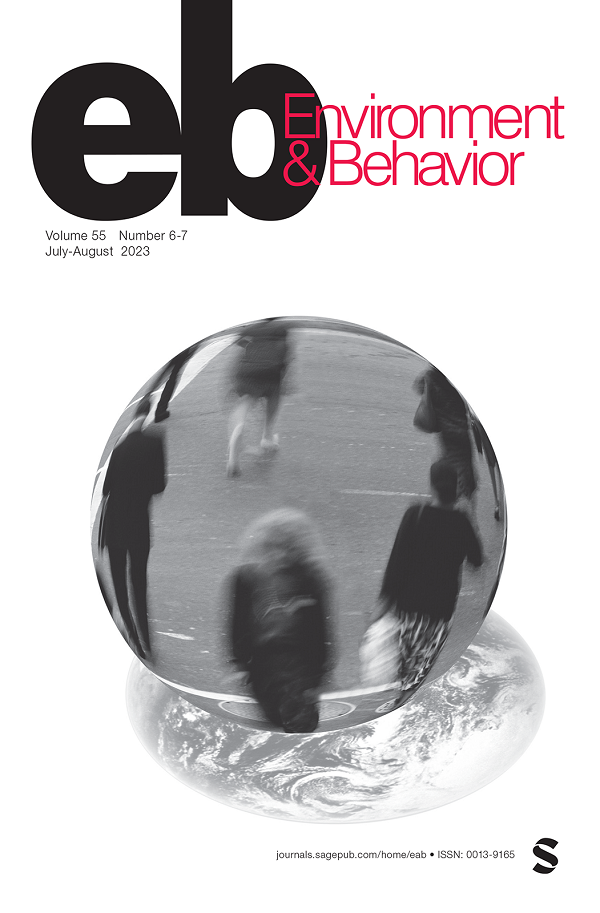Green Building, Green Behavior? An Analysis of Building Characteristics that Support Environmentally Responsible Behaviors
IF 4.6
2区 心理学
Q1 ENVIRONMENTAL STUDIES
引用次数: 17
Abstract
This study examines the environmentally responsible behaviors (ERBs) of undergraduates (n = 575). ERBs were measured in an online survey and the influence of situational context on behavior was explored at two scales: 1) green versus non-green building and 2) building characteristics. The Positive Sustainable Built Environments model was used to analyze three building characteristics: Prime, Permit, and Invite. Prime refers to characteristics that prepare occupants to adopt ERBs via communicating a sustainable ethos or restoring attentional capacity (e.g., use of natural materials and views to nature). Permit refers to features that allow occupants to conserve resources (e.g., operable light switches). Invite pertains to features that explicitly encourage ERBs (e.g., signage prompting occupants to turn off lights). Regression results demonstrated that living in a green building had no significant impact on ERBs. However, the Prime and Invite building characteristics significantly predicted improved Energy, Water, and Materials conservation. Results yield implications for designers seeking to create sustainable buildings that promote ERBs.绿色建筑,绿色行为?支持环境责任行为的建筑特征分析
本研究对大学生(n = 575)的环境责任行为进行了调查。本研究以在线调查的方式测量了环境行为,并从两个层面探讨了情境情境对行为的影响:1)绿色与非绿色建筑;2)建筑特征。积极可持续建筑环境模型用于分析三个建筑特征:Prime, Permit和Invite。Prime指的是通过传达可持续精神或恢复注意力能力(例如,使用天然材料和自然景观),使居住者准备采用erb的特征。许可证是指允许居住者节约资源的特征(例如,可操作的电灯开关)。“邀请”指的是明确鼓励员工停车的功能(例如,提示居住者关灯的标志)。回归结果表明,居住在绿色建筑中对erb没有显著影响。然而,Prime和Invite的建筑特征显著地预测了能源、水和材料的节约。结果为寻求创造可持续建筑的设计师提供了启示,以促进erb。
本文章由计算机程序翻译,如有差异,请以英文原文为准。
求助全文
约1分钟内获得全文
求助全文
来源期刊

Environment and Behavior
Multiple-
CiteScore
13.30
自引率
1.80%
发文量
13
期刊介绍:
Environment & Behavior is an interdisciplinary journal designed to report rigorous experimental and theoretical work focusing on the influence of the physical environment on human behavior at the individual, group, and institutional levels.
 求助内容:
求助内容: 应助结果提醒方式:
应助结果提醒方式:


